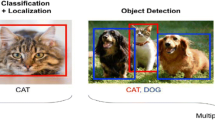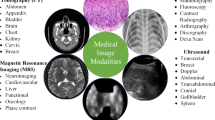Abstract
As cataracts are the most common cause of blindness and are responsible for more than half of all occurrences of blindness worldwide, early detection is crucial. It is now recognized that childhood cataract, which was once common among the elderly, is a significant cause of infant and young child blindness and severe visual impairment. The objective of this paper is to develop a machine learning-based optic image-based cataract detection system. The public health dataset has been used to collect the data in this case using the internet of things module. The auto region encoder basis Boltzmann architecture has been used to pre-process and pre-train this data for improved data classification. The detection was carried out using this pre-trained data, and when an image showed signs of cataract in the eye, it was classified using auto region encoder basis Boltzmann architecture. The simulation results show that various optical-based cataract image datasets have the best accuracy, precision, recall, F-1 score, and specificity.










Similar content being viewed by others
Availability of data and materials
All the data’s available in the manuscript.
References
Bhandary, N., Adnani, A.: Eye disease detection using RESNET. Eye 7(9), 1–5 (2020)
De Fauw, J., et al.: Clinically applicable deep learning for diagnosis and referral in retinal disease. Nat. Med. 24(9), 1342–1350 (2018)
Dela Cruz, J.C., et al.: Portable nuclear and cortical eye cataract detection using image processing. In: Proceedings of the 2020 10th International Conference on Biomedical Engineering and Technology (2020)
Goh, J.H.L., et al.: Artificial intelligence for cataract detection and management. Asia-Pac. J. Ophthalmol. 9(2), 88–95 (2020)
Guo, L., et al.: A computer-aided healthcare system for cataract classification and grading based on fundus image analysis. Comput. Ind. 69, 72–80 (2015)
Hossain, M.R., et al.: Automatic detection of eye cataract using deep convolution neural networks (DCNNs). In: 2020 IEEE Region 10 Symposium (TENSYMP). IEEE (2020)
Kamiya, K., et al.: Prediction of phakic intraocular lens vault using machine learning of anterior segment optical coherence tomography metrics: phakic lens vault prediction using machine learning. Am. J. Ophthalmol. 226, 90–99 (2021)
Lin, H., et al.: Diagnostic efficacy and therapeutic decision-making capacity of an artificial intelligence platform for childhood cataracts in eye clinics: a multicentre randomized controlled trial. EClinicalMedicine 9, 52–59 (2019)
Lin, D., et al.: A practical model for the identification of congenital cataracts using machine learning. EBioMedicine 51, 102621 (2020)
Mahesh Kumar, S.V., Gunasundari, R.: Computer-aided diagnosis of anterior segment eye abnormalities using visible wavelength image analysis based machine learning. J. Med. Syst. 42(7), 1–12 (2018)
Malik, S., et al.: Data driven approach for eye disease classification with machine learning. Appl. Sci. 9(14), 2789 (2019)
Morales-Lopez, H., Cruz-Vega, I., Rangel-Magdaleno, J.: Cataract detection and classification systems using computational intelligence: a survey. Arch. Comput. Methods Eng. 28, 1–14 (2020)
Niya, C.P., Jayakumar, T.V.: Analysis of different automatic cataract detection and classification methods. In: 2015 IEEE International Advance Computing Conference (IACC). IEEE (2015)
Pathak, S., Kumar, B.: A robust automated cataract detection algorithm using diagnostic opinion based parameter thresholding for telemedicine application. Electronics 5(3), 57 (2016)
Patwari, M.U., et al.: Detection, categorization, and assessment of eye cataracts using digital image processing. In: The First International Conference on Interdisciplinary Research and Development, Thailand (2011)
Sengupta, S., et al.: Ophthalmic diagnosis using deep learning with fundus images–a critical review. Artif. Intell. Med. 102, 101758 (2020)
Sramka, M., et al.: Improving clinical refractive results of cataract surgery by machine learning. PeerJ 7, e7202 (2019)
Yu, F., et al.: Assessment of automated identification of phases in videos of cataract surgery using machine learning and deep learning techniques. JAMA Netw. Open 2(4), e191860 (2019)
Zhang, L., et al.: Automatic cataract detection and grading using deep convolutional neural network. In: 2017 IEEE 14th International Conference on Networking, Sensing and Control (ICNSC). IEEE (2017)
Zhang, X., et al.: Machine Learning for Cataract Classification and Grading on Ophthalmic Imaging Modalities: A Survey (2020). arXiv preprint https://arxiv.org/abs/2012.04830
Funding
This research not received any fund.
Author information
Authors and Affiliations
Contributions
WAB: Conceived and design the analysis, writing—original draft preparation. SA: collecting the data, AAK: contributed data and analysis stools, AA: performed and analysis, AAD: performed and analysis, FAR: Wrote the paper, MA: Editing and figure design.
Corresponding author
Ethics declarations
Conflict of interest
The authors declare that they have no known competing financial interests or personal relationships that could have appeared to influence the work reported in this paper.
Ethical approval
This article does not contain any studies with animals performed by any of the authors.
Additional information
Publisher's Note
Springer Nature remains neutral with regard to jurisdictional claims in published maps and institutional affiliations.
Rights and permissions
Springer Nature or its licensor (e.g. a society or other partner) holds exclusive rights to this article under a publishing agreement with the author(s) or other rightsholder(s); author self-archiving of the accepted manuscript version of this article is solely governed by the terms of such publishing agreement and applicable law.
About this article
Cite this article
Bhat, W.A., Ahmed, S., Khan, A.A. et al. Cataract eye detection by optik image analysis using encoder basis Boltzmann architecture integrated with internet of things and data mining. Opt Quant Electron 55, 917 (2023). https://doi.org/10.1007/s11082-023-05038-7
Received:
Accepted:
Published:
DOI: https://doi.org/10.1007/s11082-023-05038-7




